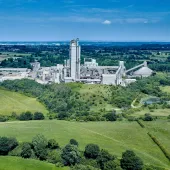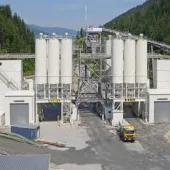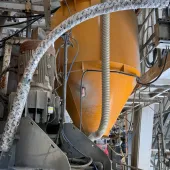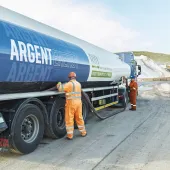Global cement industry reports 25% CO2 intensity reduction
Global Cement and Concrete Association calls for urgent government action to accelerate net-zero mission
THE extensive decarbonization work being carried out by the global cement and concrete industry to cut CO2 emissions is set out in a new global report launched at COP30 in Belem, Brazil. The report details latest industry data showing that the sector is making progress, and also emphasizes the need for urgent global government input to help accelerate action.
The report finds that the industry has reduced the CO2 intensity of cementitious products by 25% across the globe since 1990, and also sets out a series of policy recommendations that can pave the way for faster reductions.
Dominik von Achten, president of the Global Cement and Concrete Association (GCCA) and chairman of the managing board of Heidelberg Materials, said: ‘Our industry is collaborating and innovating across every aspect of our manufacturing – finding new ways to work and deploying exciting technologies that are already making a genuine step change.
‘However, to achieve the industrial-scale transformation that our world needs, we cannot do it by ourselves – our industry needs the support of governments, policymakers, stakeholders, and our allies across the built environment right now.’
The report calls for the urgent implementation of effective policies which promote the use of otherwise non-recyclable municipal and industrial waste as sustainable alternative fuels for cement kilns, as well as using construction demolition waste as recycled raw materials. Other key policies include a change in building codes to encourage the wider adoption of blended cement and concrete products, as well as the establishment of market-driven national carbon pricing mechanisms that incentivise decarbonization and investment in clean innovation.
Thomas Guillot, chief executive of the GCCA, said: ‘The breadth of activity we are seeing across our membership is truly inspiring, with great examples of projects and work across all decarbonization levers, where enabling policies exist.
‘Cement and concrete are essential materials for the world, but we know they are also essential to decarbonize. Despite our progress, we know that firm policy action across the world is fundamental to enabling us to accelerate our reductions.’
Four years on from the launch of its net-zero roadmap, the GCCA's 'Cement and Concrete Industry Net Zero Progress Report 2025/26' highlights the leading role that companies across the world are playing in decarbonization. The report highlights more than 60 stand-out decarbonization projects from GCCA member companies and partner associations, including:
CO2 reductions through using waste materials (‘alternative fuels’) to replace fossil fuels, use of decarbonated raw materials, energy-efficiency measures, and innovations such as use of hydrogen and kiln electrification.
Acceleration of capture, utilization and storage (CCUS) which accounts for 36% of the industry’s planned CO2 reductions, according to the GCCA Roadmap. Publicly announced projects are collated and made available to see on the GCCA/LeadIT green cement technology tracker
Increasing use of alternative energy sources
Lower-carbon concrete and circularity, and design and construction.










